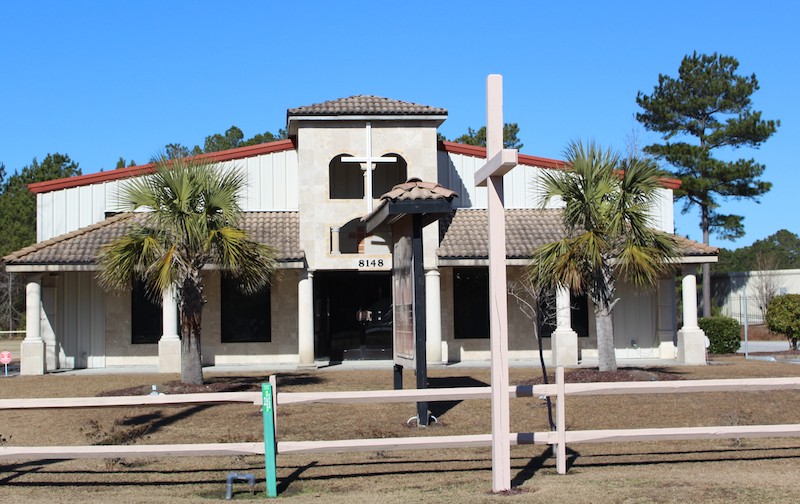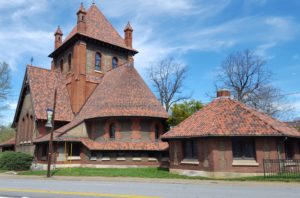What You Should Know About Church Loan Requirements
If you are looking to expand your ministry or provide renovations for your church, you will want to consider a church loan. Today, there are a number of financial institutions and lenders that offer church loans. Here’s a look at what you need to know about church loans and church loan requirements.
Why Would a Church Need a Loan?
There are a number of reasons why you will want to consider a church loan. Here are some of the most common reasons why a church will want to consider a loan.
1). Renovations
If you have an older church, then you will want to consider making renovations. A renovated church may not only attract more new members, but it can also allow your church to provide more amenities, a more comfortable sanctuary, and functionality for your church members.
2). Expansion of Church
If your ministry is growing, then there may come a time that you will outgrow your church. A church loan will allow you to expand your church or perhaps build a new church to allow you to make enough room for your growing flock.
3). Major Purchases
Perhaps there is a special project that you would like to undertake or a large purchase like a playground you would like to add to the church property. Or, perhaps you want to buy a whole new church building.
A church loan will allow you to finance these major purchases.
What Type of Loan Does a Church Need?
A church loan is technically a commercial loan. Therefore, your church will be evaluated much like a business when a lender considers it. That’s why it is important to have your church’s financial information up to date when applying for a loan.
What Are Church Loan Requirements?
When applying for a church loan, you will need to have some specific information available for the lender. While each lender may have specific requirements, most lenders will be looking for the following information regarding your church.
1). Three Years of Financial Statements
A lender will want to look at the last three years of your church’s financial statements. This will include a balance sheet and income statement for each year. If your church is working with an accountant, then you should have no issues providing this information to the lender. If you are not working with an accountant and want to create the financial statements but don’t know how, contact Griffin Church Loans to receive free forms to help you create the financial statements.
2). Total Membership of the Church
It will be necessary for the lender to know the size of your church. Therefore, you will need to provide the total membership of your church. Church membership includes men, women, and children. A member does not have to be someone that gives money to the church. Instead, it is someone who has met the requirements to be counted as a church member. This may or may not be a formal process.
3). Number of Giving Units
Much of your church’s income is going to come from the contributions of your church’s members. Therefore, a lender will want to know the number of giving units that your church receives. A Giving Unit is a commonly used term that has different meanings to different churches and lenders. A common definition of Giving Unit is a person who has a job, regularly attends the church, and gives at least $500 per year.
4). Current Property Value
The lender will also need to know the approximate property value of your church. If you do not have an old appraisal, do NOT order one, as appraisals ordered by customers are often not permitted. Instead, tell the lender what you believe the property to be worth and when the loan is approved, the lender will order an appraisal.
5). History of the Church
You should also provide a history of the church. This will give the lender a better idea of the church’s longevity and standing in the community. Some of the information you will want to provide should include when the church was founded, its place in the history of the community, and any notable events in the church’s history. Here are some specifics that you should include in the church’s history.
- Denomination
- Background of church leadership
- Church locations, including current location and any proposed location
- The primary ministries of the church
- Demographics of the congregation
- Church services: include daycare, youth ministries, outreach, etc.
6). Campaign Information
Finally, the lender will want to know about any campaigns associated with the church that will play a role in funding the project. In particular, the lender will be looking for the following information:
- Time frame – How long is the campaign expected to last.
- Dollar raised to date – Amount of the funds raised as a percentage of the campaign’s total goal.
- Total campaign projections– How much is the campaign projected to raise by specific dates. Also, is the campaign hitting its projection goals.
- History of previous campaigns– How much the church raised during previous campaigns compared to the campaign’s goals.
Tips for Church Loans
Loans are major undertakings for a church. Therefore, it is important for the leaders of a church to understand what makes for a successful church loan. Here are some helpful tips when it comes to successfully managing a church loan.
1). Know What Your Church Needs
It is important to have a clear understanding of what the church needs before applying for the loan. This will make the lender more comfortable. For instance, if you are using the church loan for renovations, then the type of renovations should be spelled out for the lender. If you are looking to build a new church, the lender will want to know the location of the proposed site as well as the size and the functions of the new church.
2). Organize Your Church’s Finances
Lenders will prefer to loan to a church that has organized finances. Therefore, you should consider investing in an accountant that can ensure that your church’s income statements and balance sheets are properly prepared. However, as stated before, internally prepared statements are usually acceptable for Griffin Church Loans.
3). Borrow within Limits
Sometimes a lender will qualify your church for a bigger loan than what the church has requested, and there can be a temptation to use the additional funds for more projects. However, it is important that the leadership of the church be comfortable with the payment of the loan because, ultimately, the church is using its building/real estate as collateral for the loan. If the loan fails, then the church risks losing its building. Sometimes the lender will offer a smaller loan than the church was seeking; when this happens, the church may want to consider downsizing the project or seeking an explanation from the lender.
4). Lower Payment or Quick Payoff, Which is Better?
Whether your church should opt for a lower payment or a quicker loan payoff depends on the church’s objectives and future plans. If your church has tight cash flow and low savings, then you may want to consider a loan with a lower payment. If your church is flush with money and does not have any cash flow issues, then you may want to consider paying off the loan quickly to reduce the interest expense.
5). Pay Off the Loan Early
There may be some extra bountiful years at your ministry. Therefore, it is important to take these opportunities to pay down the loan as early as possible. This will allow your church the chance to eliminate years off of the church’s loan.
6). Understand Interest Rate and Loan Terms
As a church leader, you may not be too familiar with interest rates and loan terms. However, it is important that you understand the various terms that the lender will use. Here are some interest rate terms that you should understand before applying for a church loan.
- Fixed interest rate– A fixed interest rate loan means that the interest rate will be locked in for the life of the loan.
- Variable interest rate– A variable interest rate means that the interest rate will float and change according to the prevailing interest rates in the market.
- Amortization– This is the length of time the loan payment is calculated over; it is not the same as the term of the loan.
- Loan Term – This is the length of time before a loan comes due or is expected to be paid off.
- Interest rate only loan – This is a loan where the payment made goes towards paying down the interest and not the principal.
7). Integrate Your Loan into Your Ministry’s Long Term Planning
Once you have your church loan, it is important to factor the church loan payments into the long-term planning of your church. The highest priority should be placed on properly servicing the loan. That is because a loan default can result in the loss of the church property.
8). Know Your Lender
Finally, get to know your lender. Chances are that a lender will be more likely to loan to your church if they fully understand your church’s vision and how the loan will play a role in strengthening the church.
Learn More About Church Loans
At Griffin Church Loans, we have provided over 1.5 billion dollars in closed church loans since 1999. Our funding has ranged from as low as $50,000 to as high as $35,000,000 for one church loan. Our team of lending specialists are experts at helping to demystify and understand the church loan process. To talk to one of our loan specialists, contact us at (800) 710-6762.
Editor’s Note: The post was originally published on Semtember 20, 2021 and has been completely revamped and updated.


